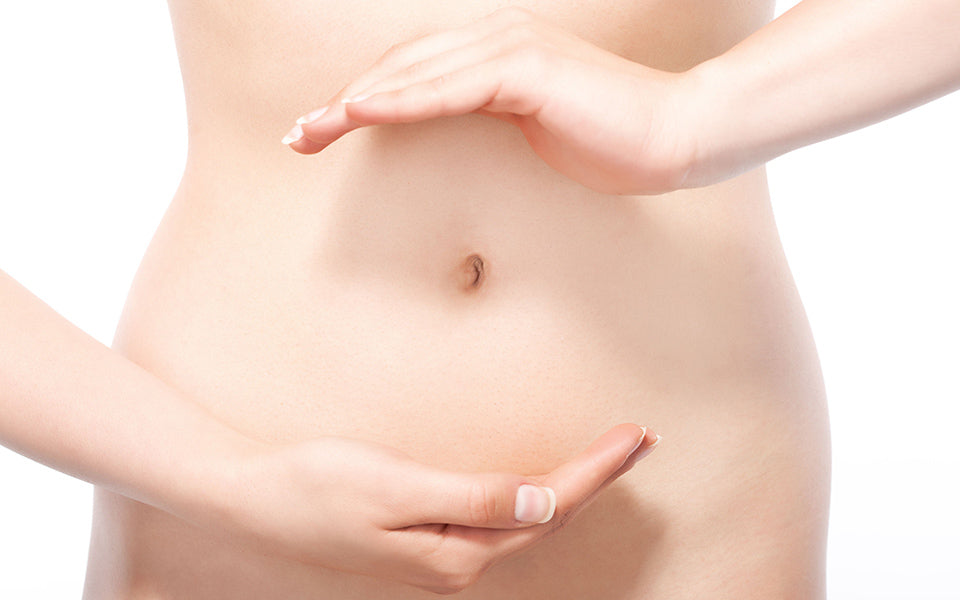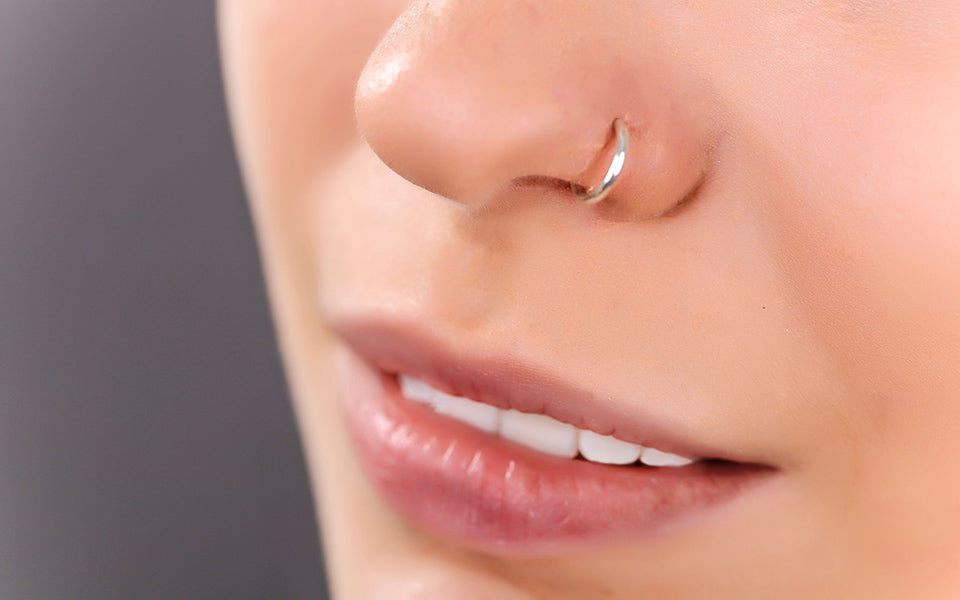Polycystic ovary syndrome, or PCOS, is a type of endocrine disorder that some believe is on the rise. According to the CDC, about 6 to 12 percent of women over the age of reproductive age have this condition.
It can cause hormonal imbalance and lead to the formation of cysts on the ovaries. This condition can affect various aspects of a woman's health, including her fertility and skin health. Since its symptoms can vary from person to person, some women are even misdiagnosed.
One of the most common symptoms of this condition is abdominal bloating. This condition is characterized by the appearance of a large and irregular belly. In this article, we will talk about the causes of this condition and how it can affect a woman's weight gain.

What is a PCOS Belly and What Causes It?
Polycystic ovarian syndrome (PCOS) can have various symptoms. One of these is abdominal weight gain. This condition is often referred to as 'PCOS belly'.
The cause of this condition can be attributed to the various factors that affect the body's fat storage. For people with PCOS, weight gain is usually accompanied by a pattern of increased visceral fat in the abdomen.
Studies have shown that women with this condition are prone to developing inflammation in their abdomen. This could lead to insulin resistance and glucose dysfunction. It has been known that the presence of inflammatory molecules in this area can increase the body's oxidative stress.
Compared to other types of weight gain, the abdomen of people with PCOS is physiologically different. Many women with this condition report that their belly has grown even though their bodies haven't.
Those with this condition are prone to experiencing bloating and abdominal weight gain. In addition to this, they may also struggle with losing weight. If you think that you have this condition, then take a look at the other symptoms below.

Other Symptoms of PCOS
Although the exact causes of this condition are unknown, many women with it will experience various symptoms. Some of these include premenstrual syndrome, irregular periods, hair growth, bloating, diarrhea, low mood, anxiety, and food intolerances or allergies. In addition, some of the other common symptoms of this condition include infertility, low mood, and constipation.
If you have these symptoms for a prolonged period of time, then it's possible that you have PCOS. You should consult a medical professional if you suspect that you have this condition.

How is PCOS diagnosed?
Your doctor will tell you about your symptoms and medical history. They'll then perform a medical examination, which may include a pelvic exam. The pelvic exam is a type of test that's used to check the health of the reproductive organs outside and inside the body. Because of the symptoms of polycystic ovarian syndrome (PCOS), you may be required to undergo some tests. One of these may be an ultrasound.Through sound waves and computers, the test creates detailed images of various organs and blood vessels. It can check if there are cysts or if the ovaries are too big. It can also measure the thickness of the endometrium. In addition, your health care provider may perform blood tests to check your blood sugar levels and cholesterol levels.

How to Lose Weight With PCOS Belly?
Even a slight weight loss of about 5% can improve the quality of life and hormone levels for women with polycystic ovarian syndrome (PCOS).
1. Reduce your carbohydrate intake
Consuming carbohydrates can affect insulin levels, which is why it is important for women with polycystic ovarian syndrome (PCOS) to reduce their consumption. About 70% of them have insulin resistance, which means that their cells can no longer recognize the effects of insulin. Insulin is a hormone that helps maintain energy storage and control blood sugar levels.
Obese women with insulin resistance and PCOS followed a low-carb, high-fat diet for three weeks. After that, they followed a 60% carbohydrate, 25% fat diet for three more weeks. Compared to the control group, the insulin levels dropped by 30% in the high-fat phase.
A low glycemic diet can help improve the health of people with polycystic ovarian syndrome (PCOS). The glycemic index is a measure of how quickly a food can raise blood sugar. In one study, participants who followed a normal diet for 12 weeks had better insulin sensitivity when they transitioned to the low-GI phase.

2. Get plenty of fiber
Having a high-fiber diet can help women with polycystic ovarian syndrome (PCOS) lose weight. The daily recommended intake of fiber in the US is 14 grams per 1,000 calories. However, most American women only consume around 16 grams of fiber.In one study, researchers discovered that high fiber intake was associated with a lower level of insulin resistance and body fat in women with the condition. In another study, researchers discovered that having a high fiber diet can help decrease body weight in women with PCOS.
3. Eat enough protein
One of the most important factors that can help people lose weight is protein, as it can help stabilize blood sugar and increase feelings of fullness. In a study, participants who were given a high-protein diet lost more weight than those who were given a standard diet. After six months, the women in the high-protein group had lost more weight than those in the control group, with the average weight loss being 9.7 pounds. If you're worried about not getting enough protein, you might want to add protein to your diet. Some of the healthy protein sources include eggs, nuts, seafood, dairy, and meat.

4. Eat healthy fats
Getting enough healthy fats can help you feel satisfied after meals and improve your health. In a study, researchers found that a low-fat diet was more beneficial for women with polycystic ovarian syndrome (PCOS) than a high-fat diet.The high-fat diet lost more weight than the low-fat diet after eight weeks, and it also reduced the amount of lean body mass. Although fat is a high-calorie source, adding healthy fats to your meals can help you feel full and reduce hunger. Some of these include avocados, nuts, olive oil, and coconut butters. To further enhance the filling effect of snacks and meals, combine protein and healthy fats with your food.

5. Eat fermented foods
Having healthy gut bacteria can help maintain a healthy weight and metabolism. Studies have shown that people with polycystic ovarian syndrome (PCOS) have fewer good bacteria in their gut than those without the condition. According to new research, certain strains of probiotic can help improve one's weight loss. Having a good supply of fermented foods such as yogurt and other fermented products can also help boost the number of good bacteria in one's gut.

6. Eat mindfully
People with polycystic ovarian syndrome (PCOS) are more prone to developing an eating disorder. One solution is to adopt a mindful eating approach, which involves paying attention to the body's signals, such as fullness and hunger. This can help prevent overeating and emotional eating. According to research, mindful eating habits can help people lose weight.

7. Limit processed foods and added sugars
One of the most important steps that a woman can take to lose weight is to reduce her consumption of processed food. This can help lower her blood sugar levels and prevent her from developing insulin resistance. Compared to people without PCOS, women with this condition have a higher chance of experiencing these symptoms. Studies have shown that real food is more satisfying and lower in blood sugar than processed ones. In addition, experts recommend that women with polycystic ovarian syndrome (PCOS) limit their consumption of refined carbohydrates and added sugars to maintain a healthy weight.

8. Get Enough Sleep
Getting enough sleep is also known to improve one's health. If you have polycystic ovarian syndrome (PCOS), then you might experience various sleep disorders such as insomnia, daytime sleepiness, and sleep apnea. Lack of sleep can trigger the production of certain hormones that cause hunger, such as cortisol and ghrelin. It can lead to an increase in one's consumption of food throughout the day.A review of 18 studies has shown that people who get less than five hours of sleep a night are more prone to being obese. In addition, a study revealed that having an extra hour of sleep can reduce one's body mass index by 0.35 kilograms per square metre. Better sleep can also help with fat loss. In one study, it was found that those who get fewer than six hours of sleep a night are more prone to developing abdominal obesity.
































Leave a comment
This site is protected by hCaptcha and the hCaptcha Privacy Policy and Terms of Service apply.